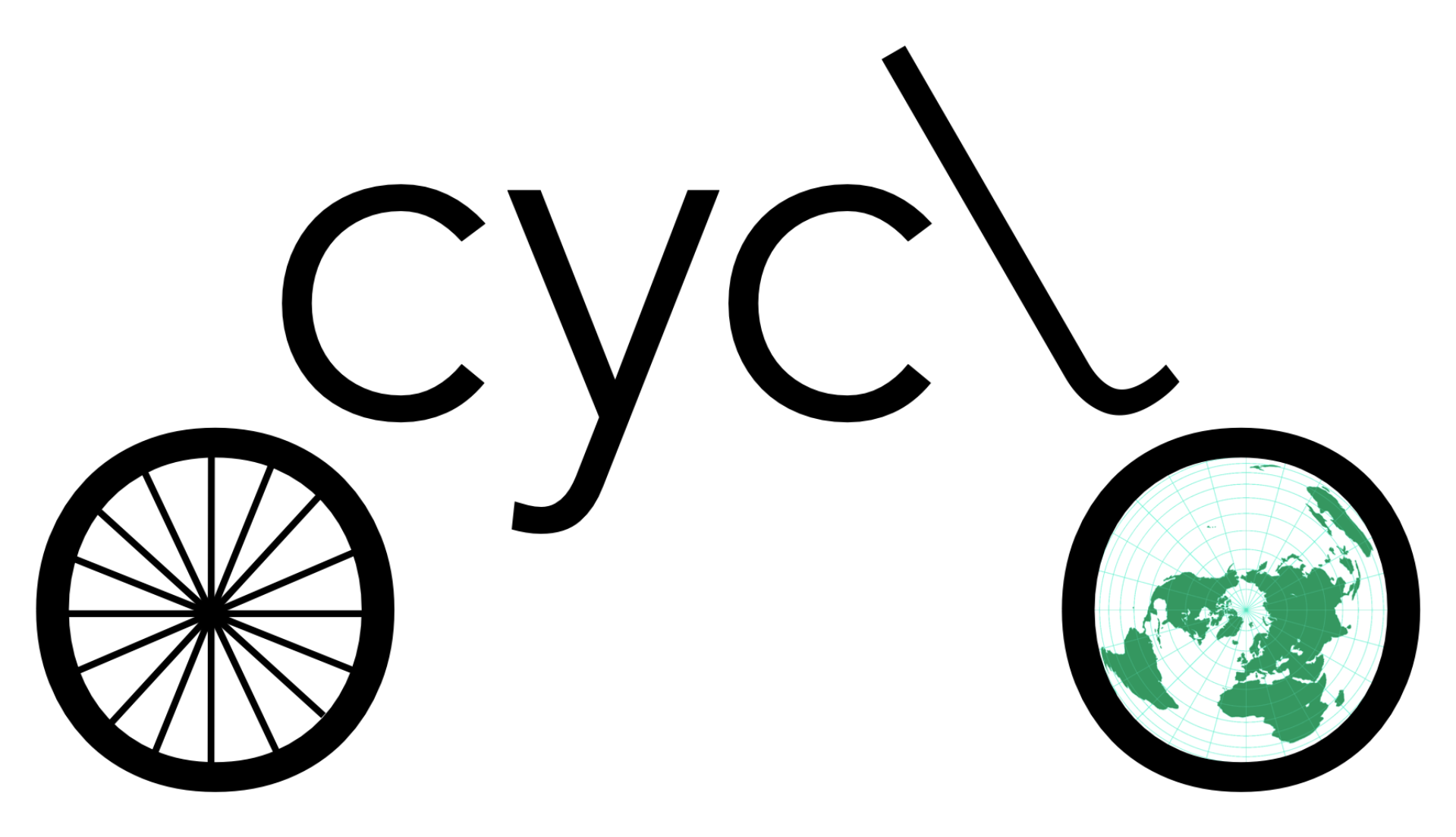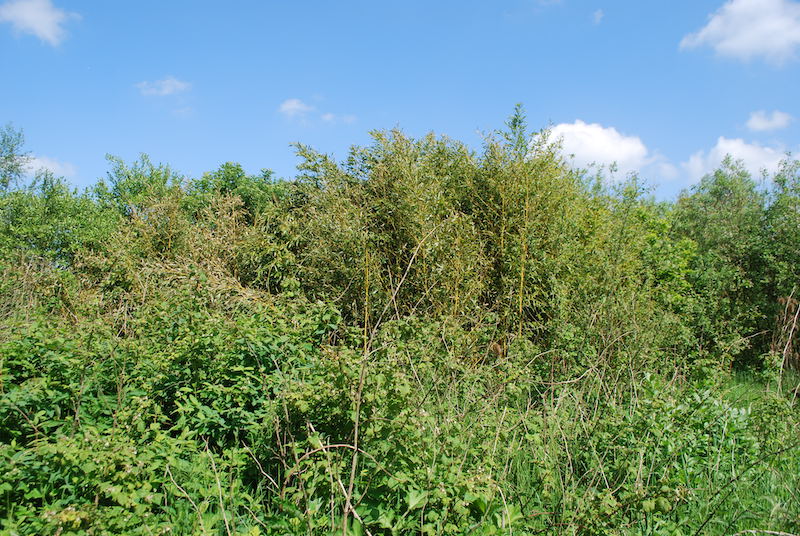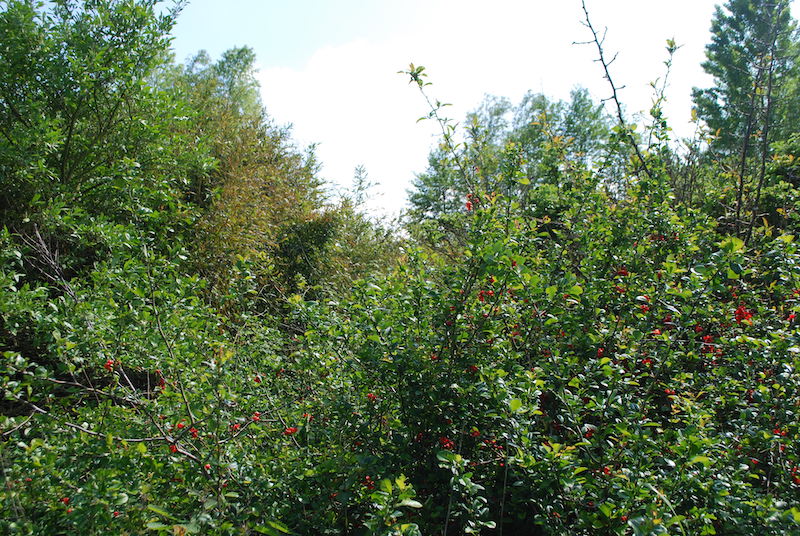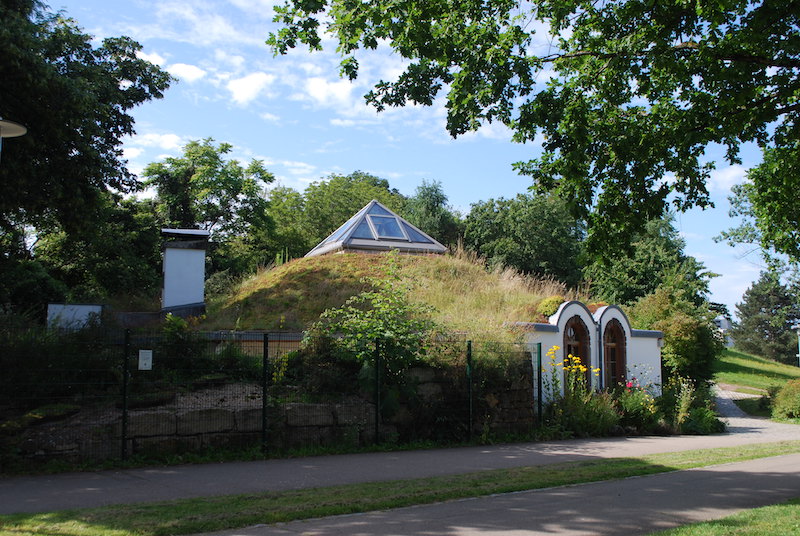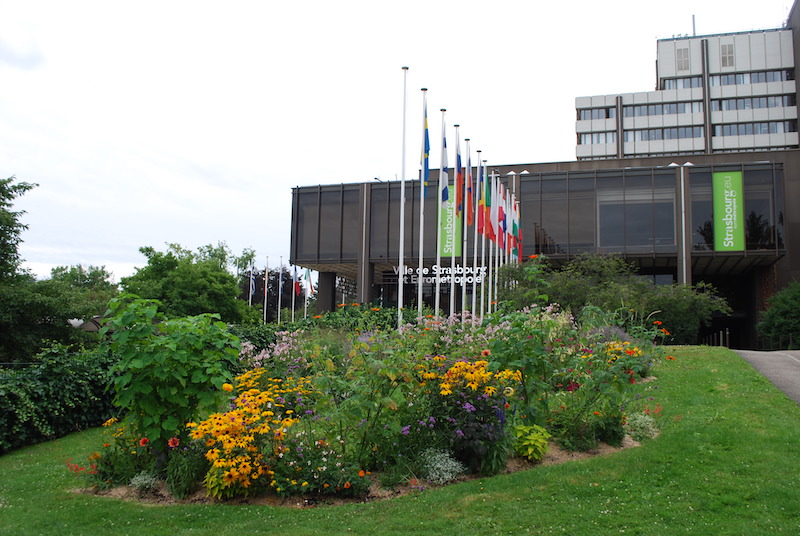A forest that grows on trust
On Saturday 29 May, we visited food forest Ketelbroek, close to the Smokkelpad campsite where we are staying. We met Wouter van Eck at the entrance, right next to a bare field. He leads us through the wild greenery and starts telling us stories. Soon, he points out a beaver lodge in the ditch next to the site; the beavers were attracted by the less steep and overgrown waterfront on the food forest side. We arrive at a small clearing where we can sit and have tea made from the mint from the food forest. This is the spot where Wouter told his story many times.
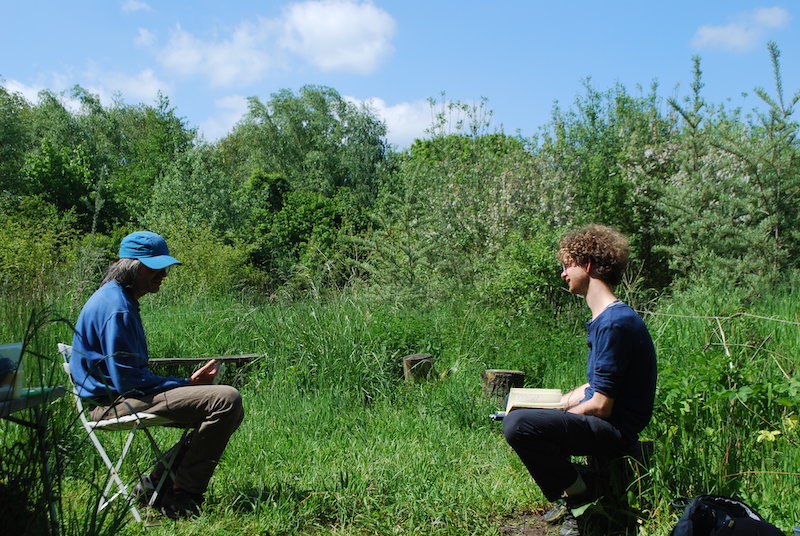
Listening to Wouter van Eck in the food forest 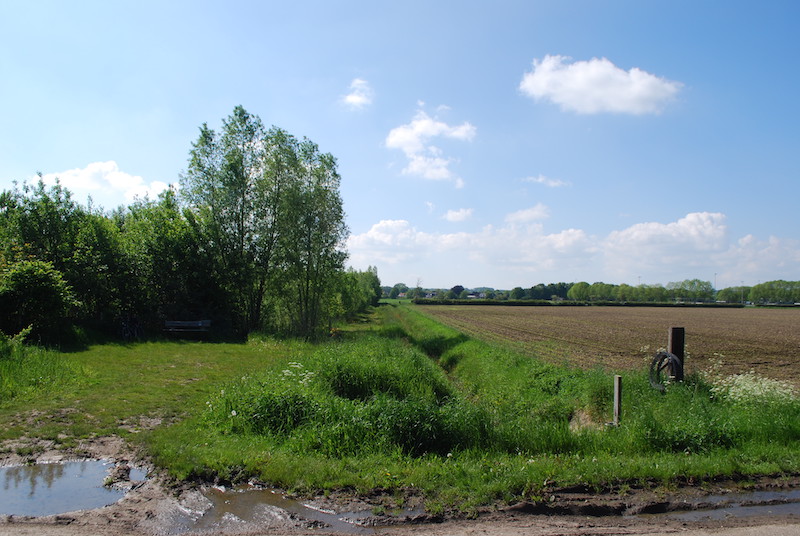
On the left the food forest, on the right a bare field
Food forest Ketelbroek was 12 years ago still a bare maize field, like the one next to it. You would not think so with all that vegetation. For the construction, some soil has been moved to create both a dry and a wet area and a number of species have been conveniently placed, for example in relation to shade, wind and soil moisture. An alder hedge has been strategically placed to provide shade but also for nitrogen-rich leaves that spread across the food forest. Buckthorn should be in full sun. The pawpaw is much more sensitive and needs to be pampered with little wind and lots of sun to do well. There are countless species planted in this way, but only species that occur in the same climate zone. Species do not necessarily occur naturally in the Netherlands but can, for example, also come from North America or Japan.
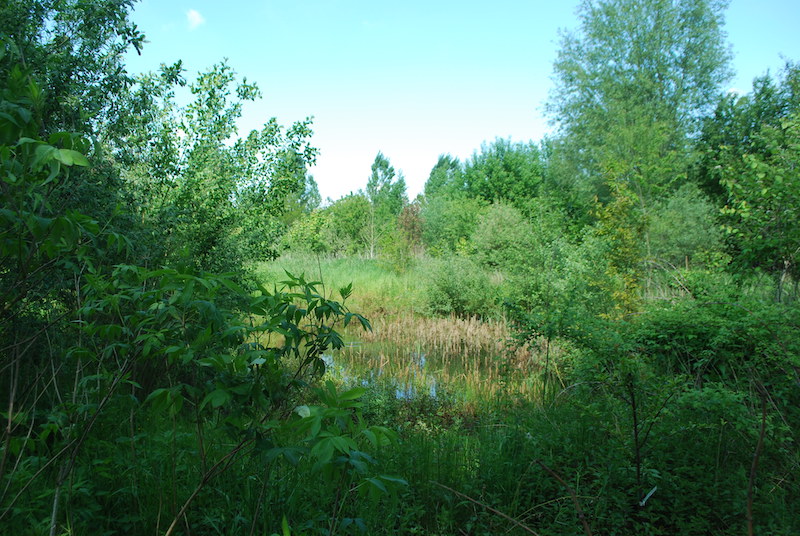
Pond in the food forest 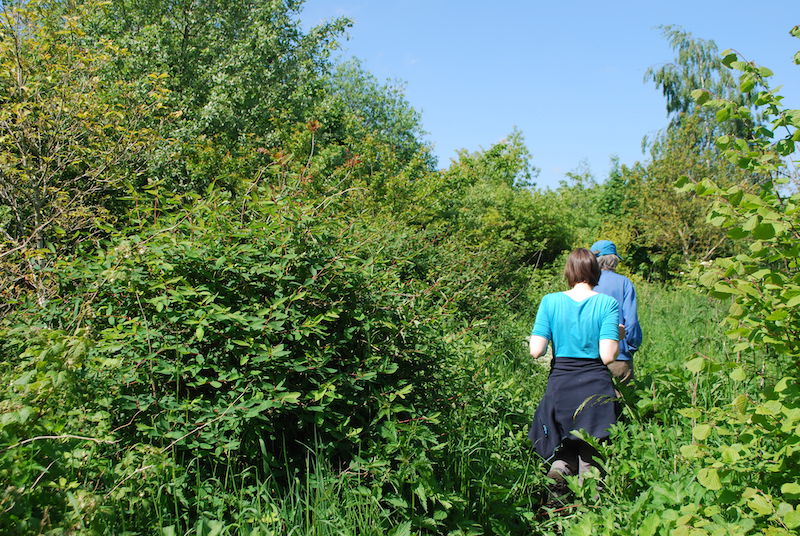
Apart from the initial design, the development is mainly a matter of letting nature take its course. Nettles, for example, are not removed. They absorb the excess nitrogen in the soil and as they die off, more and more carbon is released into the soil, improving the nitrogen/carbon balance. With patience, their place will be taken by other plants. Patience is perhaps the most important ingredient for growing a food forest. The other ingredient that goes with it is trust. As Wouter also tells us, he has learned to actually do less and less and to trust the natural processes more and more. You could call him a very lazy farmer, because actually the most important thing he has to do is harvest. A food forest does not need fertiliser, water or pesticides. Nevertheless, he is there almost every day because; “the food forest does not need me, but I do need the food forest” is how Wouter describes his connection with the place.
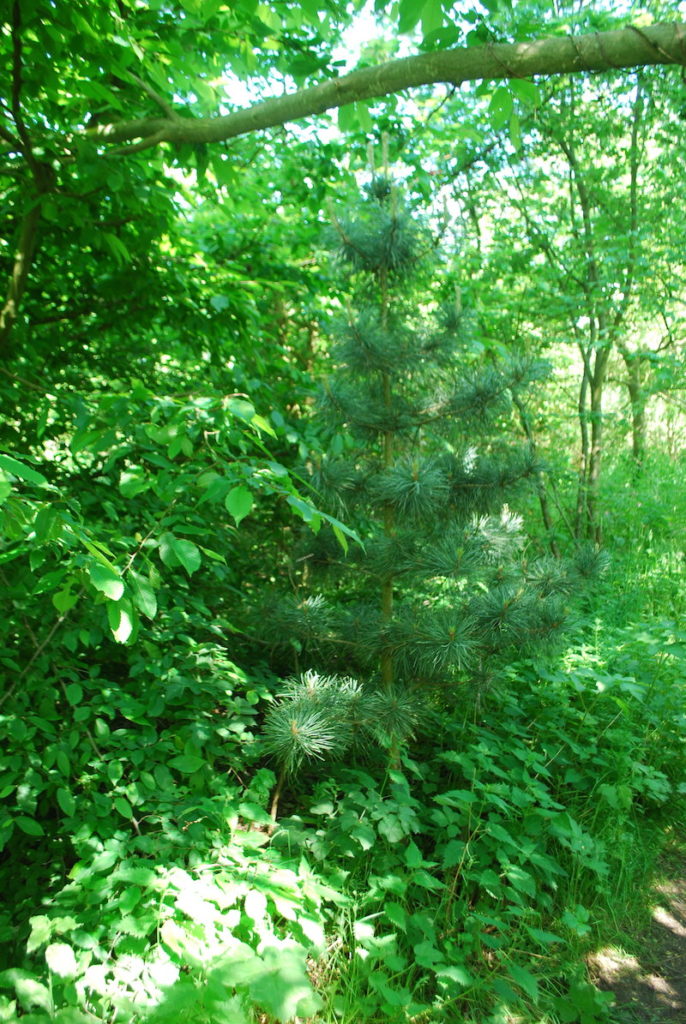
Korean pine 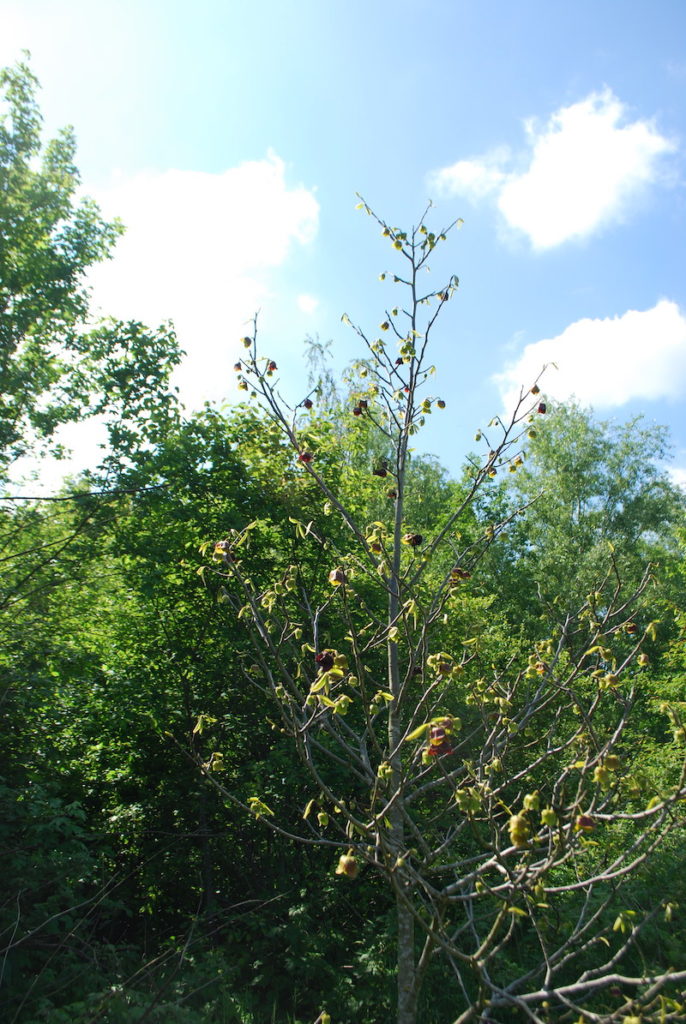
Pawpaw 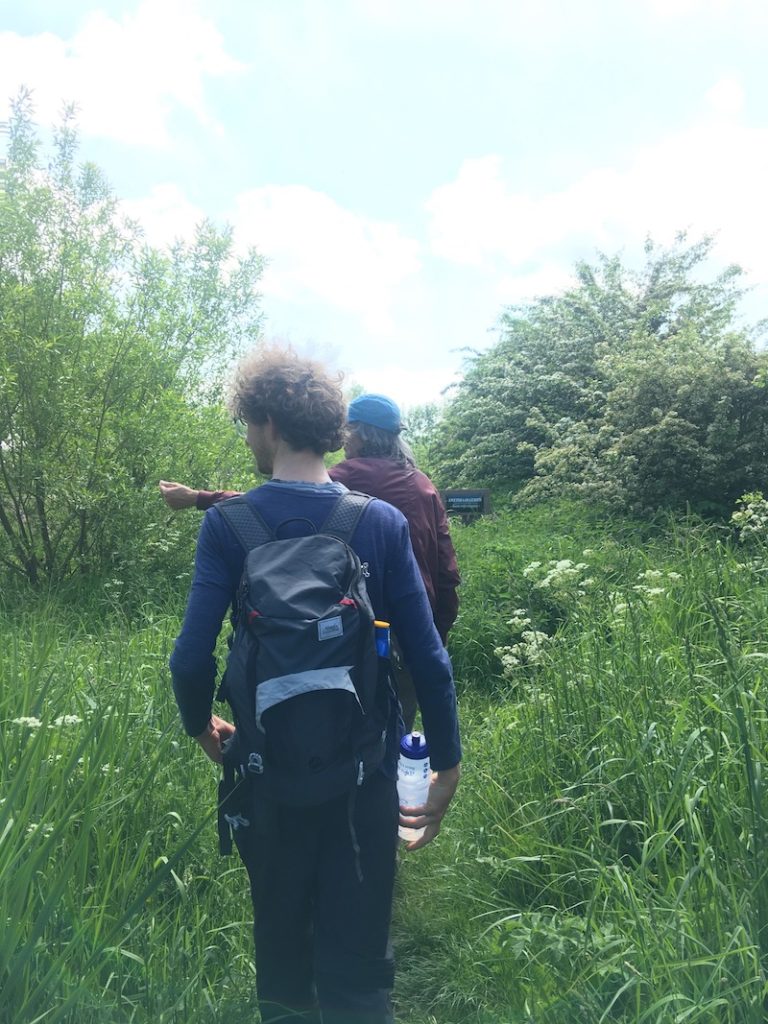
The often special fruits, nuts and edible greenery find their way to a star chef but also to the organic shop in Nijmegen. Besides the production of food, food forest Ketelbroek also has great value for nature. Rare insects and flowers can be found there, but also a White Stork has nested on the edge of the food forest and in the ditch next to the food forest, you can even find a Beaver’s nest.
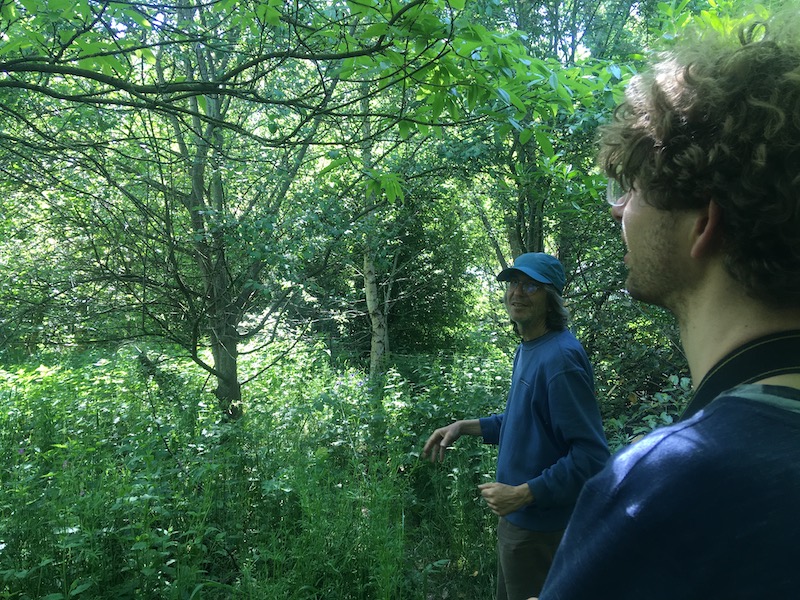
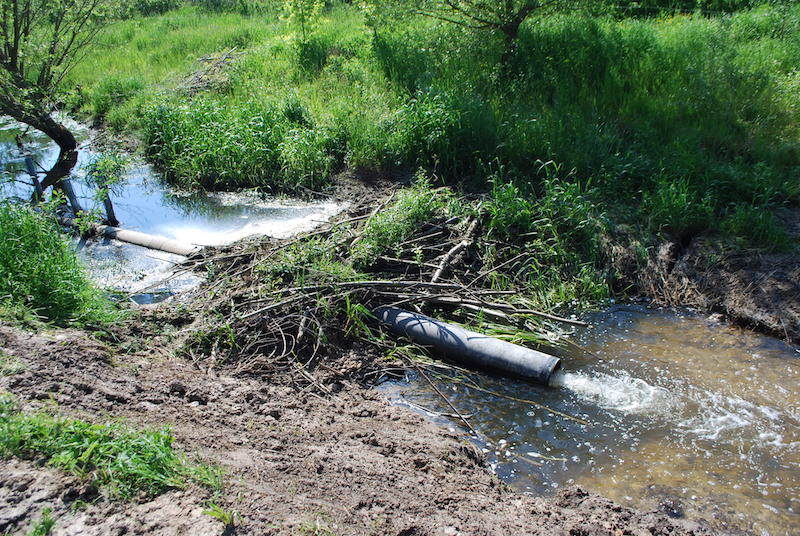
Bever dam next to the food forest
Ketelbroek shows that nature and food production can go hand in hand. But what role will food forests play in our future food system? Experiments in Schijndel and the Flevopolder, self-harvesting, and risky investments. Wouter has ideas about it. Listen to our conversation with him (in Dutch):
